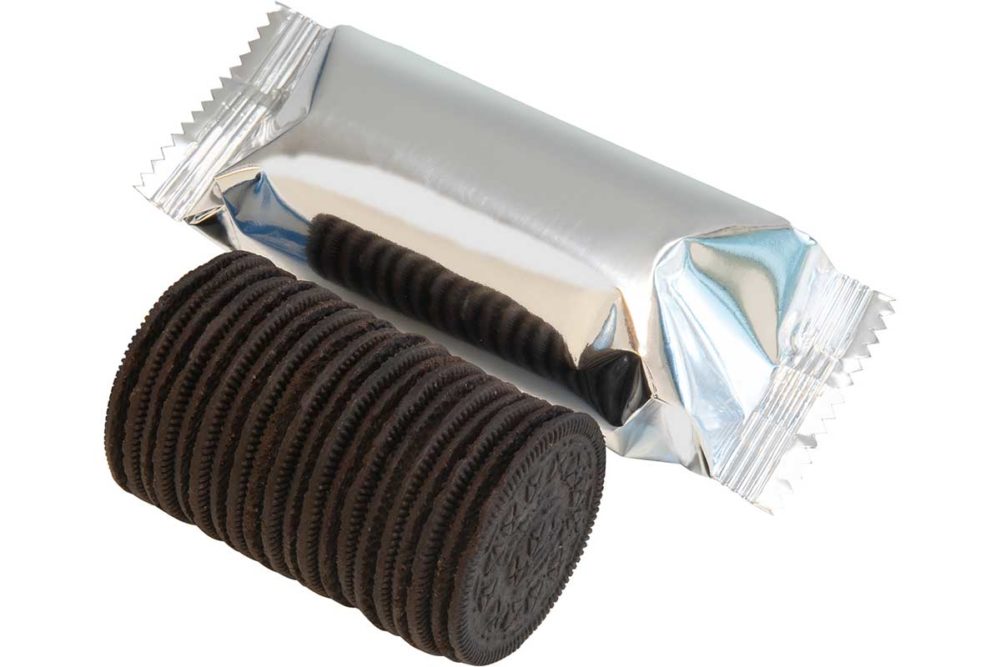Although they’ve been around awhile, single-serve cookie packs are on the upswing, and bakers are figuring out how to produce more packages to meet the growing demand.
“The direction is definitely going that route,” said Bill Kehrli, vice president of sales, Cavanna Packaging. “The rest of the world is way ahead of us when it comes to smaller pack sizes. That trend is coming here. We’re doing a couple of lines for a couple of people. We’re seeing more money allocated and invested.”
Dave Watson, bakery and snack subject matter expert with The Austin Co., said he’s seeing co-manufacturers who are exclusively producing small cookie packages.
“Private label cookie firms are running all these special two-pack varieties because the big guys don’t want to take the floor space away from their existing operations for these smaller pack sizes,” he said. “A lot of the larger companies are pushing it out to co-manufacturers to do those special pack sizes for them.”
There’s a variety of reasons why consumers are gravitating toward these now.
“Consumers lead busy lives and are increasingly looking for convenient products that suit their full schedules,” according to a statement from Syntegon. “Single-serve packaging fits that bill and is therefore becoming more and more popular. ... Moreover, with the ongoing pandemic, consumers also continue to appreciate the hygienic aspect of individually wrapped items.”
Bakers who want the flexibility to switch between different packaging sizes have several good options. It’s important for bakers to identify what they want from the beginning, said Dennis Gunnell, president, Formost Fuji. Bakers should bring suppliers into the process early.
“Get all the stakeholders and say, ‘Here’s what we want to do.’ Even if you think the person may not be involved,” he said. “How will it interact with all the processes along the way? Get all stakeholders involved from marketing to the supply chain.”
Bakers need to know what they plan to produce on the line right away as well as a few years down the road.
“We can’t do everything,” Mr. Gunnell added. “Or you can, but it’s going to be very manual. If you need to do everything, that’s OK. But then you’re going to need to make sacrifices to give you that flexibility. And usually that means hand loading. People are just way better at that kind of thing than any type of equipment.”
Although some individual packs are produced using vertical form/fill/seal baggers, Mr. Watson said most are gravitating toward horizontal form/fill/seal wrappers.
“I would say the majority of the production seems to be going to flowwrap products with a U-board for products that need added protection,” he said. “Certainly, you see less product going into a plastic tray in the small pack sizes than you did in the past. It’s a cost savings. People are getting away from the plastic trays and going into a U-board if they need protection or maybe just a heavier material for the wrap.”
U-boards are thin cardboard bases that go underneath and up the sides of delicate products for protection in a flowwrapper. Because they are part of the wrapper, using them doesn’t require labor or robotic machinery like a plastic tray would.
Mr. Watson urged bakers to identify all their options before moving forward.
“For companies looking to capitalize on the single-serve drive, it behooves them to take their time and really look at the equipment and options out there,” he said. “There are many good companies that can provide a tremendous amount of flexibility for different pack sizes.”
This article is an excerpt from the November 2022 issue of Baking & Snack. To read the entire feature on Cookie Packaging, click here.






